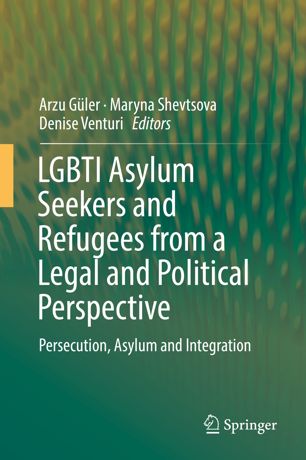

Most ebook files are in PDF format, so you can easily read them using various software such as Foxit Reader or directly on the Google Chrome browser.
Some ebook files are released by publishers in other formats such as .awz, .mobi, .epub, .fb2, etc. You may need to install specific software to read these formats on mobile/PC, such as Calibre.
Please read the tutorial at this link: https://ebookbell.com/faq
We offer FREE conversion to the popular formats you request; however, this may take some time. Therefore, right after payment, please email us, and we will try to provide the service as quickly as possible.
For some exceptional file formats or broken links (if any), please refrain from opening any disputes. Instead, email us first, and we will try to assist within a maximum of 6 hours.
EbookBell Team

4.1
50 reviewsThis book addresses the ‘three moments’ in lesbian, gay, bisexual, transgender and intersex (LGBTI) asylum seekers’ and refugees’ efforts to secure protection: The reasons for their flight, the Refugee Status Determination process, and their integration into the host community once they are recognized refugee status.The first part discusses one of the most under-researched areas within the literature devoted to asylum claims based on sexual orientation and gender identity, namely the reasons behind LGBTI persons’ flight. It investigates the motives that drive LGBTI persons to leave their countries of origin and seek sanctuary elsewhere, the actors of persecution, and the status quo of LGBTI rights. Accordingly, an intersectional approach is employed so as to offer a comprehensive picture of how a host of factors beyond sexual orientation/gender identity impact this crucial first stage of LGBTI asylum seekers’ journey.In turn, the second part explores the challenges that LGBTI asylum seekers face during the RSD process in countries of asylum. It first examines these countries’ interpretations and applications of the process in relation to the relevant UNHCR guidelines and questions the challenges including the dominance of Western conceptions and narratives of sexual identity in the asylum procedure, heterogeneous treatment concerning the definition of a particular social group, and the difficulties related to assessing one’s sexual orientation within the asylum procedure. It subsequently addresses the reasons for and potential solutions to these challenges.The last part of the book focuses on the integration of LGBTI refugees into the countries of asylum. It first seeks to identify and describe the protection gaps that LGBTI refugees are currently experiencing, before turning to the reasons and potential remedies for them.